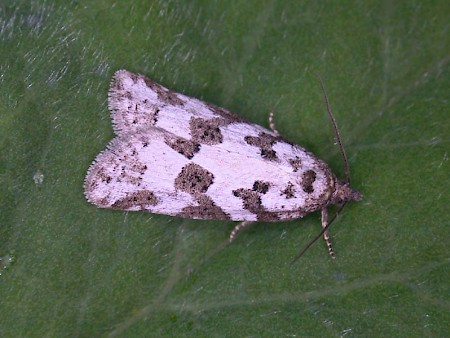49.05 BF1020
Grey Tortrix Cnephasia stephensiana
(Doubleday, [1849])
Wingspan 18-22 mm.
As its English name suggests, this is quite a greyish-brown moth. Specimens from the southern part of the British Isles are often darker than those from further north and Scotland, some of which have an almost whitish ground colour.
Flying during July and August from dusk onwards, it can be found in a variety of habitats, and the larvae feed on a range of herbaceous plants.
Larva: (description Ian F. Smith)
Foodplant: September -May and in June. Polyphagous on herbaceous plants including peas and beans, Vicia, Heracleum, Ranunculus, Rumex, Plantago, Sonchus, Centaurea, Chenopodium, Taraxacum, Hieracium, Inula, Chrysanthemum, and on mainland Europe on over 100 plants including Cirsium, Carlina, Tussilago, Serratula and Primula veris.
Initially mining a leaf and later, depending on plant species, in a leaf tube, a folded leaf edge or in a furrow below a web on underside of leaf.
See also Cirsium key.
Length: 7 mm described.
Head: Glossy. Brown ochre with pitchy marks at posterior and a pitchy lateral band.. Frons lighter than epicranial spheres. (BTS; sometimes entirely black or pitchy black.)
Prothorax (T1): Thin pale anterior border. Prothoracic shield glossy black.
Thoracic legs: Black. Tarsus paler.
Body: Dorsum glossy smoky grey sometimes tinted bluish or greenish. Ventrally paler.
Pinacula: Shining black.
Setae: Translucent colourless.
Anal plate: Black or pitchy brown. No anal comb.
Prolegs: Basally concolorous. Planta translucent whitish grey. Crochets brown.
Pupa: The pair of large curved cremaster spines differentiate it from C. asseclana and C. incertana. (See BTS -1 p154)

 UKMoths
UKMoths 




